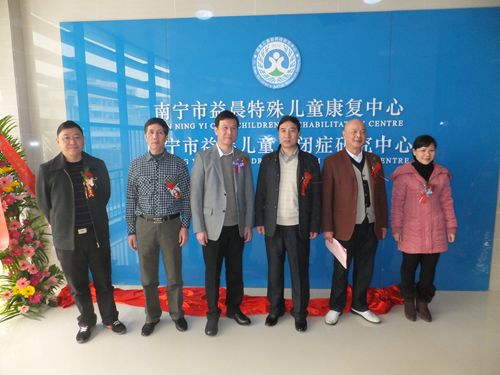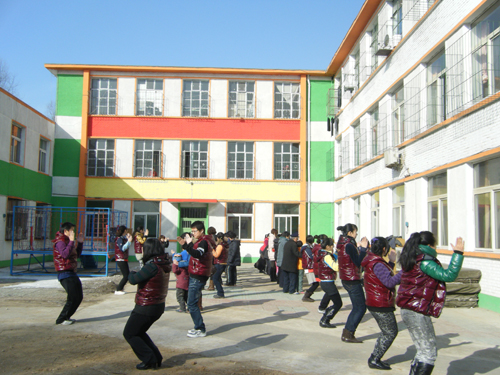领导此次研究的是美国伯恩汉医学研究所的Stuart A. Lipton。研究人员发现,MEF2C会开启特殊的基因,这些基因驱动干细胞分化成神经细胞。当从小鼠的神经干细胞中删除MEF2C后,会出现神经细胞的错误“分配”,并伴有严重的发育问题。脑部缺乏MEF2C的成年小鼠会表现出反常的焦虑行为,认知能力下降,爪紧抓,这与患有雷特氏综合症的人搓手的显著特征相类似。
此次研究首次提出,神经干细胞发育障碍与并发的孤独症之间存在直接联系。Lipton说:“此次结果为我们提供了很好的线索来研究雷特氏综合症和潜在的其它人类孤独症。识别出导致这种缺陷的变异后,我们能够追踪所发生的情况。也许我们能够在小鼠身上进行纠正,假如成功的话,最终也可能在人类身上实现。”
生物谷推荐原始出处:
Proc. Natl. Acad. Sci. USA, 10.1073/pnas.0801294105
Syntrophin mutation associated with long QT syndrome through activation of the nNOS–SCN5A macromolecular complex




 ,||
,||
*Department of Medicine, University of Wisconsin, Madison, WI 53792;  Departments of Medicine, Pediatrics, and Molecular Pharmacology and Experimental Therapeutics and ¶Department of Medicine and the Enteric NeuroScience Program, Mayo Clinic, Rochester, MN 55905; and
Departments of Medicine, Pediatrics, and Molecular Pharmacology and Experimental Therapeutics and ¶Department of Medicine and the Enteric NeuroScience Program, Mayo Clinic, Rochester, MN 55905; and  Section of Pediatric Cardiology, Texas Children's Hospital/Baylor College of Medicine, Houston, TX 77030
Section of Pediatric Cardiology, Texas Children's Hospital/Baylor College of Medicine, Houston, TX 77030
Edited by David E. Clapham, Harvard Medical School, Boston, MA, and approved April 16, 2008 (received for review February 8, 2008)
Abstract
Mutations in 11 genes that encode ion channels or their associated proteins cause inherited long QT syndrome (LQTS) and account for  75–80% of cases (LQT1–11). Direct sequencing of SNTA1, the gene encoding
75–80% of cases (LQT1–11). Direct sequencing of SNTA1, the gene encoding  1-syntrophin, was performed in a cohort of LQTS patients that were negative for mutations in the 11 known LQTS-susceptibility genes. A missense mutation (A390V-SNTA1) was found in a patient with recurrent syncope and markedly prolonged QT interval (QTc, 530 ms). SNTA1 links neuronal nitric oxide synthase (nNOS) to the nNOS inhibitor plasma membrane Ca-ATPase subtype 4b (PMCA4b); SNTA1 also is known to associate with the cardiac sodium channel SCN5A. By using a GST-fusion protein of the C terminus of SCN5A, we showed that WT-SNTA1 interacted with SCN5A, nNOS, and PMCA4b. In contrast, A390V-SNTA1 selectively disrupted association of PMCA4b with this complex and increased direct nitrosylation of SCN5A. A390V-SNTA1 expressed with SCN5A, nNOS, and PMCA4b in heterologous cells increased peak and late sodium current compared with WT-SNTA1, and the increase was partially inhibited by NOS blockers. Expression of A390V-SNTA1 in cardiac myocytes also increased late sodium current. We conclude that the A390V mutation disrupted binding with PMCA4b, released inhibition of nNOS, caused S-nitrosylation of SCN5A, and was associated with increased late sodium current, which is the characteristic biophysical dysfunction for sodium-channel-mediated LQTS (LQT3). These results establish an SNTA1-based nNOS complex attached to SCN5A as a key regulator of sodium current and suggest that SNTA1 be considered a rare LQTS-susceptibility gene.
1-syntrophin, was performed in a cohort of LQTS patients that were negative for mutations in the 11 known LQTS-susceptibility genes. A missense mutation (A390V-SNTA1) was found in a patient with recurrent syncope and markedly prolonged QT interval (QTc, 530 ms). SNTA1 links neuronal nitric oxide synthase (nNOS) to the nNOS inhibitor plasma membrane Ca-ATPase subtype 4b (PMCA4b); SNTA1 also is known to associate with the cardiac sodium channel SCN5A. By using a GST-fusion protein of the C terminus of SCN5A, we showed that WT-SNTA1 interacted with SCN5A, nNOS, and PMCA4b. In contrast, A390V-SNTA1 selectively disrupted association of PMCA4b with this complex and increased direct nitrosylation of SCN5A. A390V-SNTA1 expressed with SCN5A, nNOS, and PMCA4b in heterologous cells increased peak and late sodium current compared with WT-SNTA1, and the increase was partially inhibited by NOS blockers. Expression of A390V-SNTA1 in cardiac myocytes also increased late sodium current. We conclude that the A390V mutation disrupted binding with PMCA4b, released inhibition of nNOS, caused S-nitrosylation of SCN5A, and was associated with increased late sodium current, which is the characteristic biophysical dysfunction for sodium-channel-mediated LQTS (LQT3). These results establish an SNTA1-based nNOS complex attached to SCN5A as a key regulator of sodium current and suggest that SNTA1 be considered a rare LQTS-susceptibility gene.
- 发表跟帖
- 相关文章
- 热门文章
 家长一点通:
家长一点通:


























